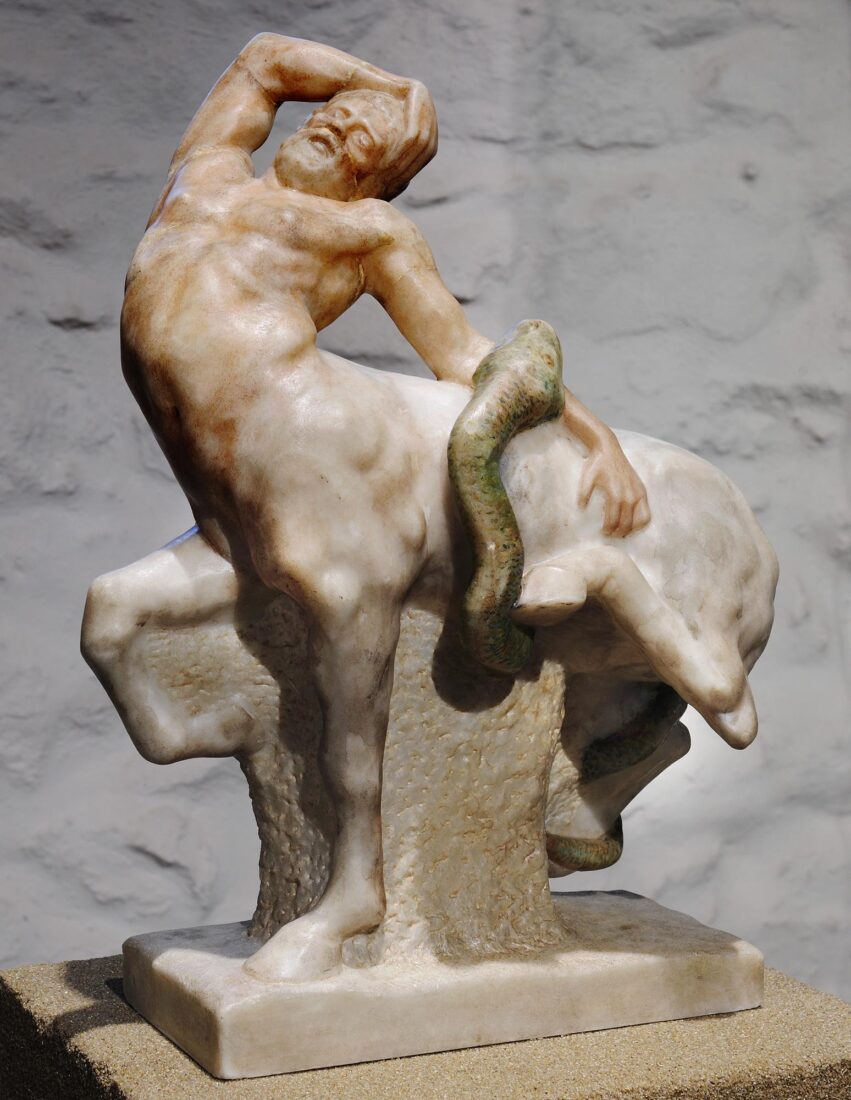We use cookies to make our site work properly, to personalize content and ads, to provide social media features and to analyze our traffic. We also share information about how you use our site with our social media, advertising and analytics partners. Read the Cookies Policy.

Thomopoulos Thomas (1873 - 1937)
Centaur, 1901
Painted marble, 60,5 x 34 x 17 cm
Donated by the artist
Thomas Thomopoulos was one of the last Greek sculptors to do post-graduate work in Munich, during a period when most other artists had already turned to Paris. This fact, however, did not prevent him from nourishing a deep admiration for the sculpture of Rodin and to be considered during his time as the “introducer of the Rodinian School in Greece”. His work combines academicism with symbolism and romantic tendencies, which are all derived from the French artist’s style, while in a number of compositions he also adopts a realistic form of depiction.
“Centaur” is a work inspired by Greek mythology, an echo, perhaps, in terms of theme, of “Female Centaur” (circa 1887) by Rodin. The “Centaur” is depicted at a moment of crisis, as a snake has wrapped itself around his body. His reaction to the deadly attack is shown by the contraction of the body backward and his right hand brought to his brow, a pose obviously based on the Hellenistic Laocoon group. Conversely, the fluid and soft surfaces and the naturally evolved base which also acts as a support, reveal the influence of Rodin’s plastic perceptions. The sculpture was painted using the encaustic method, as were quite a few of Thomopoulos’ works, who introduced this innovation around 1900.

